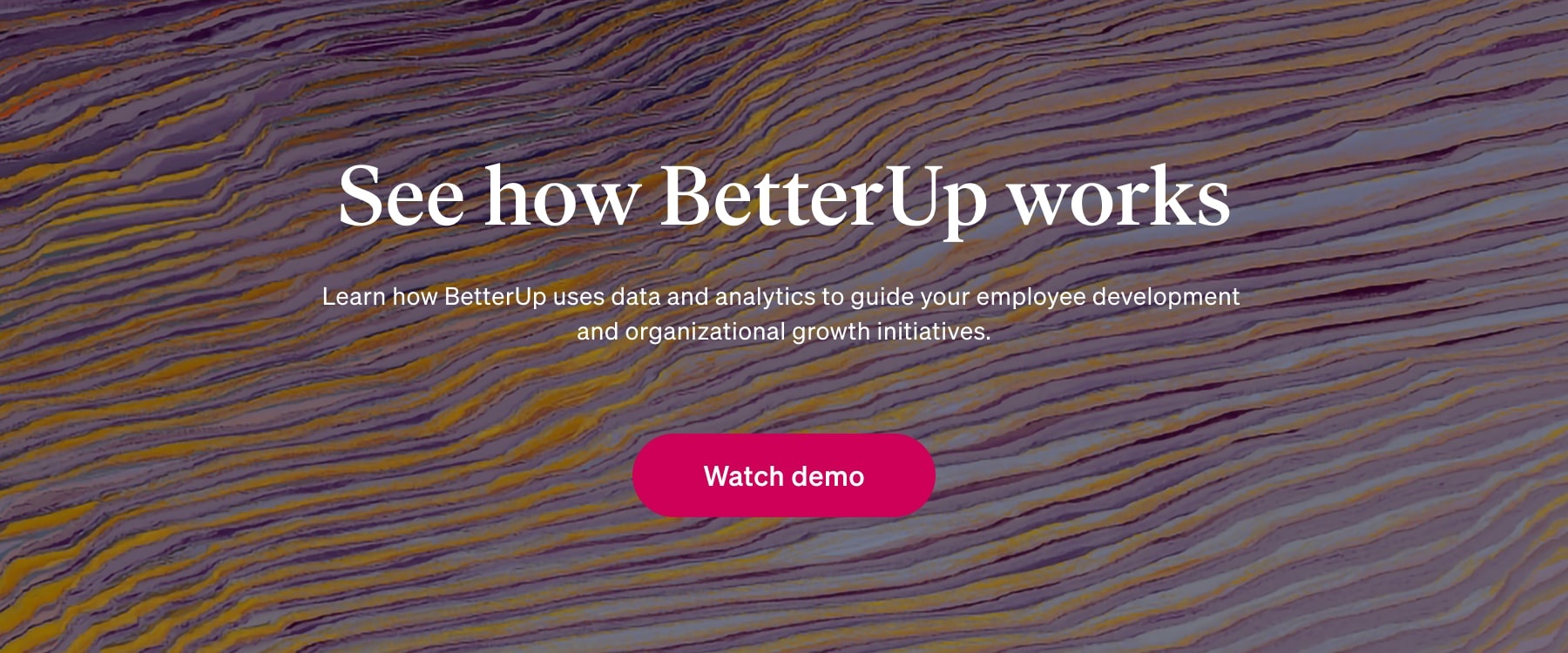-
For Business
For Business
Products
LeadBuild leaders that accelerate team performance and engagement.
Care™Drive productivity through sustained well-being and mental health for all employees with BetterUp Care™.
Solutions
Sales PerformanceTransform your business, starting with your sales leaders.
Diversity & InclusionFoster a culture of inclusion and belonging.
Customers
Case StudiesSee how innovative companies use BetterUp to build a thriving workforce.
- For Individuals
-
Resources
Resources
LibraryBest practices, research, and tools to fuel individual and business growth.
EventsView on-demand BetterUp events and learn about upcoming live discussions.
BlogThe latest insights and ideas for building a high-performing workplace.
ResearchInnovative research featured in peer-reviewed journals, press, and more.
- About
How to build a culture of connection with Shawn Achor and Farrell Redwine
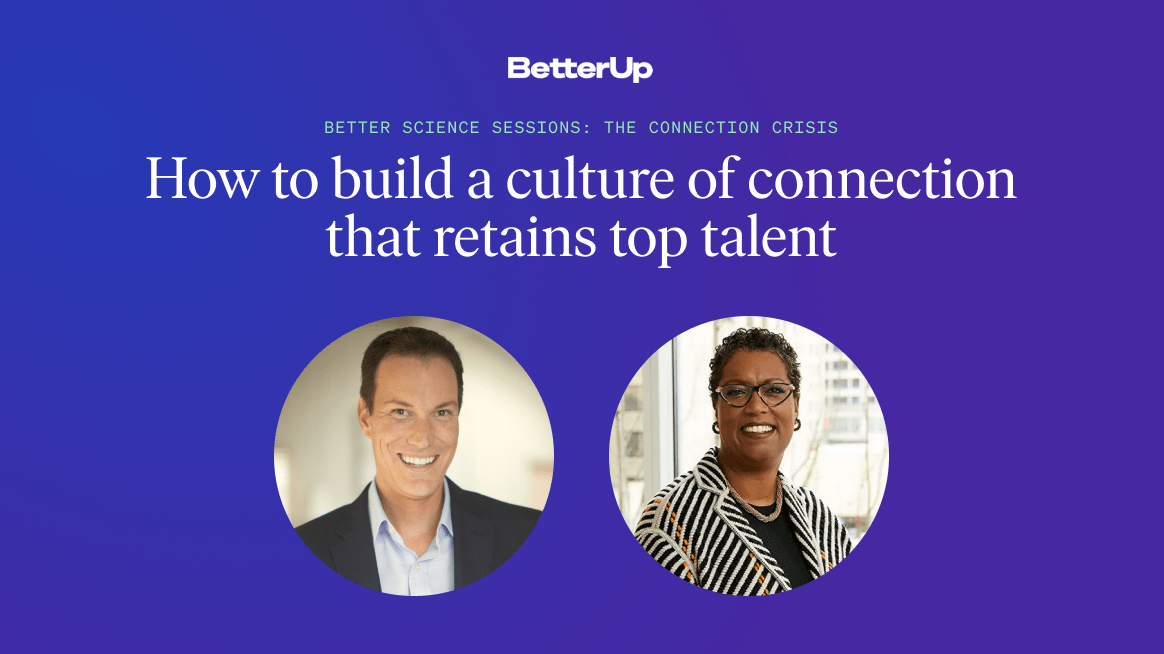
When the world shifted to remote work, video conferencing and chat apps helped us bridge distances to move work forward. Yet despite the prevalence of these tools, people feel less connected with their colleagues than ever before. Even for those getting back into the office groove, rampant feelings of social anxiety and isolation are contributing to declining performance, more absenteeism, and costly attrition.
How did we get here? And what measures can companies take to build a more connected and thriving workforce?
To help answer these questions, we sat down with Farrell Redwine, Chief Human Resources Officer at Nordstrom, and BetterUp Science Board Member and New York Times best-selling author Shawn Achor. Over the course of our conversation we dug into what makes workplace connection impactful, specific ways connection fuels performance and well-being, and tangible ways to build a culture of connection that retains top talent.
The connection crisis
While the past two years have made our lack of connection feel more acute, the seeds of the crisis were sown long before the pandemic. Longitudinal studies have revealed that loneliness has been on the rise since 1976. Americans report having fewer friends than ever before, and in BetterUp’s own research on loneliness in 2018, we found that loneliness was a problem for nearly every demographic profile. The situation has gotten so bad in the UK that they appointed a “Minister of Loneliness” in 2018. This lack of connection has been linked to depression, alcohol abuse, child abuse, sleep problems, personality disorders and Alzheimer's disease. In fact, loneliness has the same impact on mortality as smoking 15 cigarettes a day!
So what’s behind this lack of connection? While several theories have been put forward, most experts agree that the increasingly digital nature of modern life is at least partly to blame.
“One of the main reasons we see this is we’ve become extraordinarily independent as a world… but this leads to higher levels of unhappiness and lower levels of well-being. What we need to search for is higher levels of interdependence. Loneliness is not the absence of people within our lives, loneliness is the absence of feeling like we have a meaningful impact upon them or they upon you.”
Shawn Achor
The isolation caused by the pandemic put increased stress on our already weakened social ties. And one of the areas we’re feeling it most is the office. When the majority of the workforce was working remotely during the peak of the COVID-19 outbreak, lower levels of connection were to be expected. What’s surprising is that even now that we have emerged from isolation and are back together in person more often, feelings of loneliness, isolation, and an overall lack of connection to our colleagues persists.
Our research based on data from over 150,000 BetterUp members and four surveys spanning 3,000+ US workers found that:
- 61% don’t socialize with their coworkers outside of work
- 43% don’t feel a sense of connection to coworkers
- 22% or nearly 1 in 4 do not have even ONE friend at work
- More than 1 in 2 do not feel like their coworkers know the “real” version of them
And this is impacting organizations in big ways.
A lack of social connectivity at work actually makes work harder for people. We feel more stress and more anxiety when we feel more like we are going it alone. This drives high (and costly) employee attrition and increased burnout. Without connection to our peers, individual commitment craters, talent leaves, and teams lose their ability to innovate and effectively adapt to changing needs and working conditions.
But we also noticed a paradox. Remote work has actually doubled the amount of time we spend in meetings. Even though we’re technically spending more time together, at least in the virtual sense, feelings of connection are dropping.
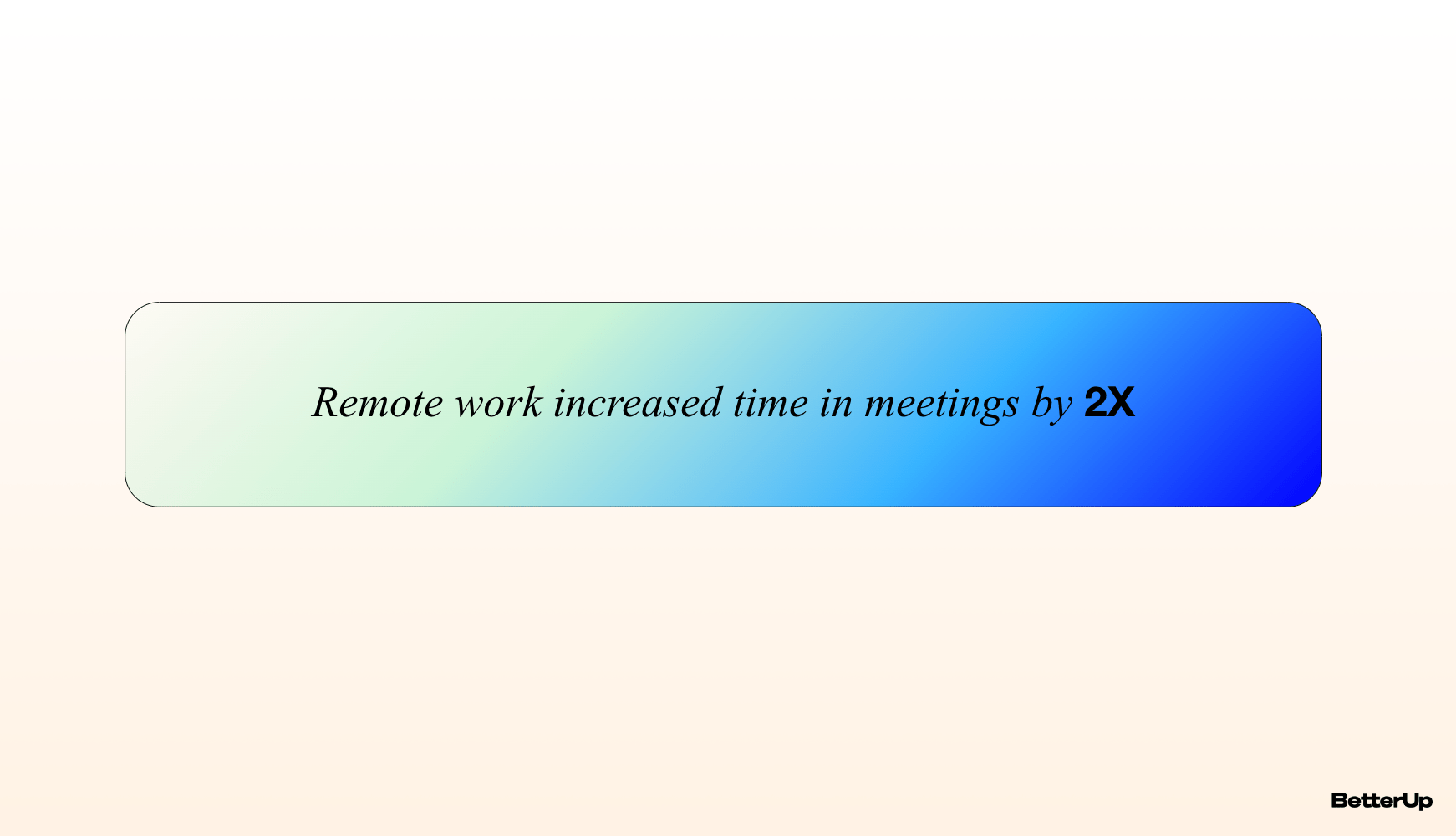
So with more, albeit digital, daily touch-points, why are we still feeling disconnected? Our research revealed that connection has two distinct features:
- The size of our networks (that is, how many people we know or are connected to in an organization) matters
- Connection is also about the feelings we experience within those networks, such as belonging, friendship, and a sense of collaboration.
Things like spontaneous chit-chat and water cooler talk, which are largely absent in remote environments, are far more important than anyone realized. Sharing our lives, being vulnerable, talking about what we’re passionate about — these are the things highly connected people do. Without these unplanned, serendipitous interactions, connection suffers.
“We’re communicating more than ever, but we’re seeing social connection scores plummeting in the midst of that hyperconnectivity. So the question is, what are we communicating about?”
Shawn Achor
It turns out that bonding over shared problems and struggles is not what builds true connection. In fact, having a shared or similar background with the people you work with was totally unpredictive of connection. Bonds can be built with anyone, even those with drastically different backgrounds and experiences from us.
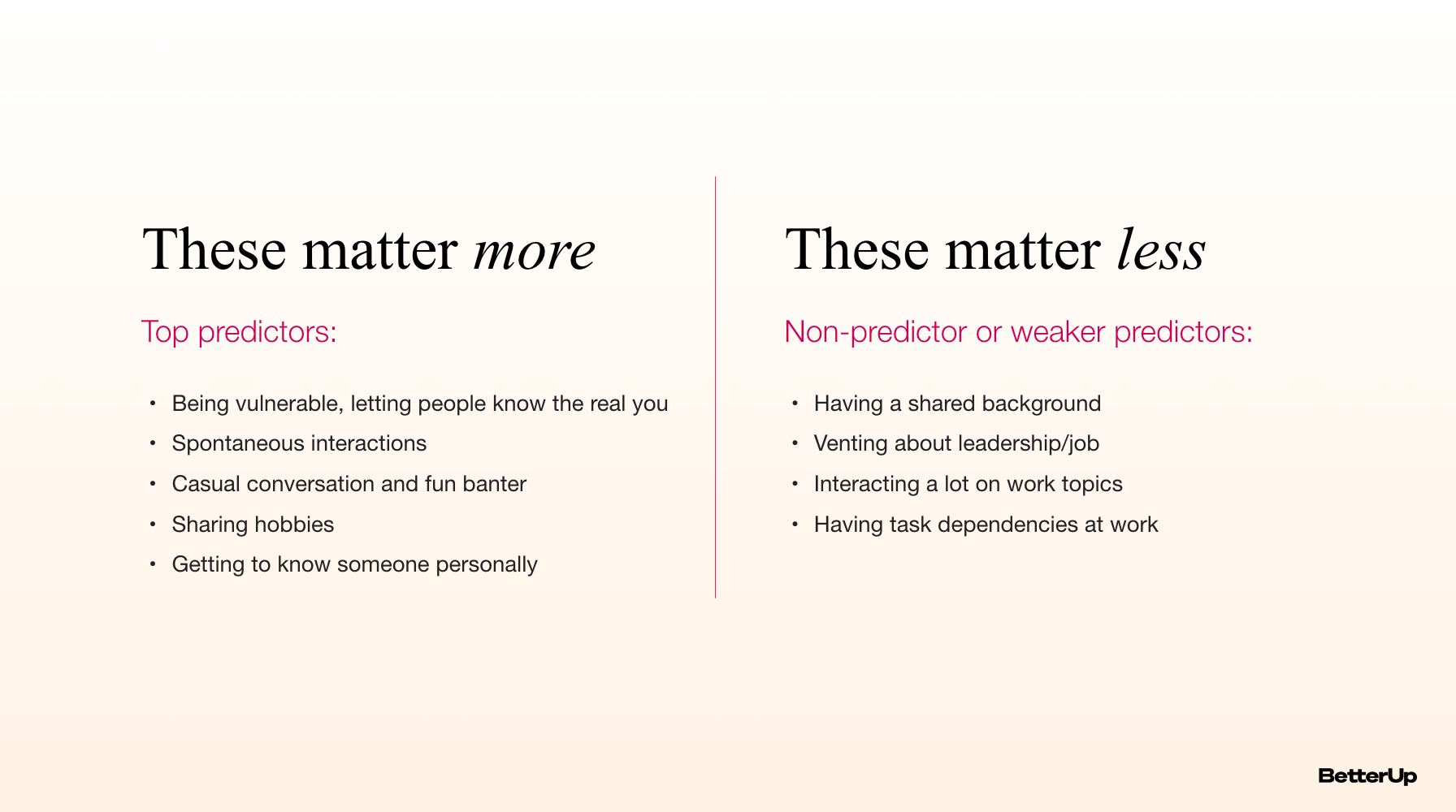
“When we have those moments of connection, or joy, or something as inane as hearing someone’s kids made them pancakes, my brain lights up and I think, ‘I love pancakes! I love my kids!’ And suddenly, a social bond begins to form. And when the unthinkable happens, whether it's a pandemic, or inflation, or a war, it’s those social connections that yield the resilience and well-being that helps us deal with the next challenge.”
Shawn Achor
The benefits of fostering authentic connection for individuals and organizations
When those authentic social bonds are formed, the results speak for themselves. Having friends at work and feeling a sense of belonging benefits the individual, their teams, and the business.
“In order for our employees to best serve our customers, they need to feel like they belong, and they also need to feel supported. We’ve done some research with our people analytics teams. Inclusive leadership and behavior drives intent to stay, which creates more collaboration, a stronger sense of community and a stronger commitment to serve our customers.”
Farrell Redwine
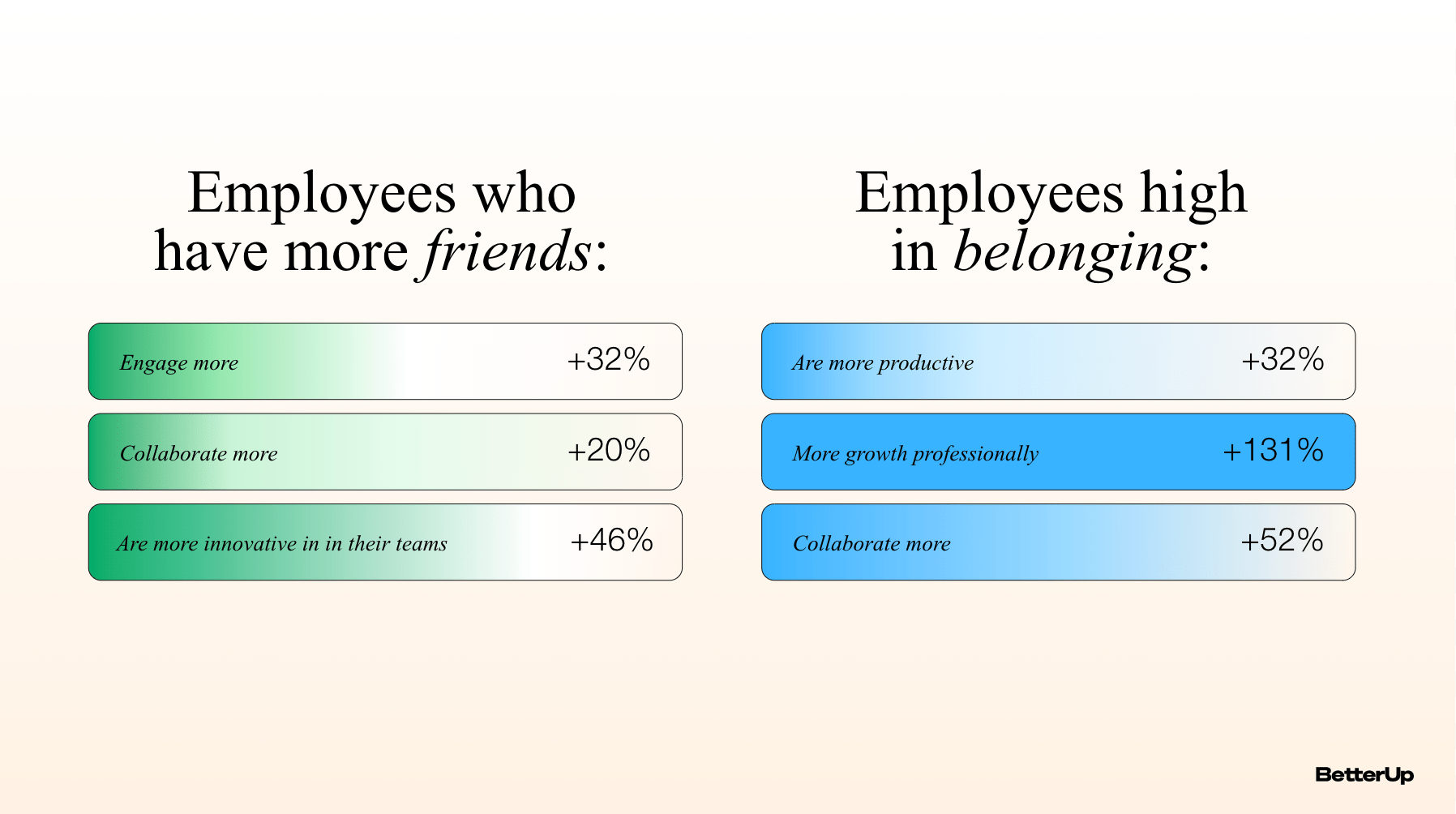
Employees who have more friends at work not only enjoy higher levels of well-being, they’re more productive (+32%), more collaborative (+52%), and are more innovative (+46%). These individual benefits translate to increased organizational agility, productivity, innovation, and higher levels of customer service and satisfaction.
When organizations prioritize connection, and support it through inclusion initiatives, employees not only feel that true sense of belonging, but the effects ripple outward to other metrics. Nordstrom is seeing the impact of their investment in building a culture of connection in profound ways:
“When employees are more connected to their managers, their teams, and the greater department, function or organization, they are more engaged, more productive, more likely to stay, have better overall well-being, are able to improvise, be creative, and more agile, which are significant capabilities right now. As a result of that, they are bringing better solutions to the table and more original ideas that are helping the business."
Farrell Redwine
How to build a culture of connection
For Nordstrom, building a culture of connection had to start at the top but in a way that also empowered individual teams and groups to continue to build more connection. Inclusive leaders set the tone for how the rest of the org will function. Nordstrom has invested in its managers, empowering them to create healthy, psychologically safe environments where employees feel included, valued, and seen for their unique potential and contributions. Everyone feels comfortable to show up as their true, authentic selves.
“We’ve focused on having a human centered strategy that encourages leaders to embrace a growth mindset. In embracing that growth mindset, they show up more authentically. They recognize that failures aren't fatal. They show up as their true selves. They’re more vulnerable, having the courage to share new things, try new things, make mistakes, and move on. By role-modeling and creating a supportive environment with their teams, we’ve seen the power of creating, connecting, bridging, and bonding."
Farrell Redwine
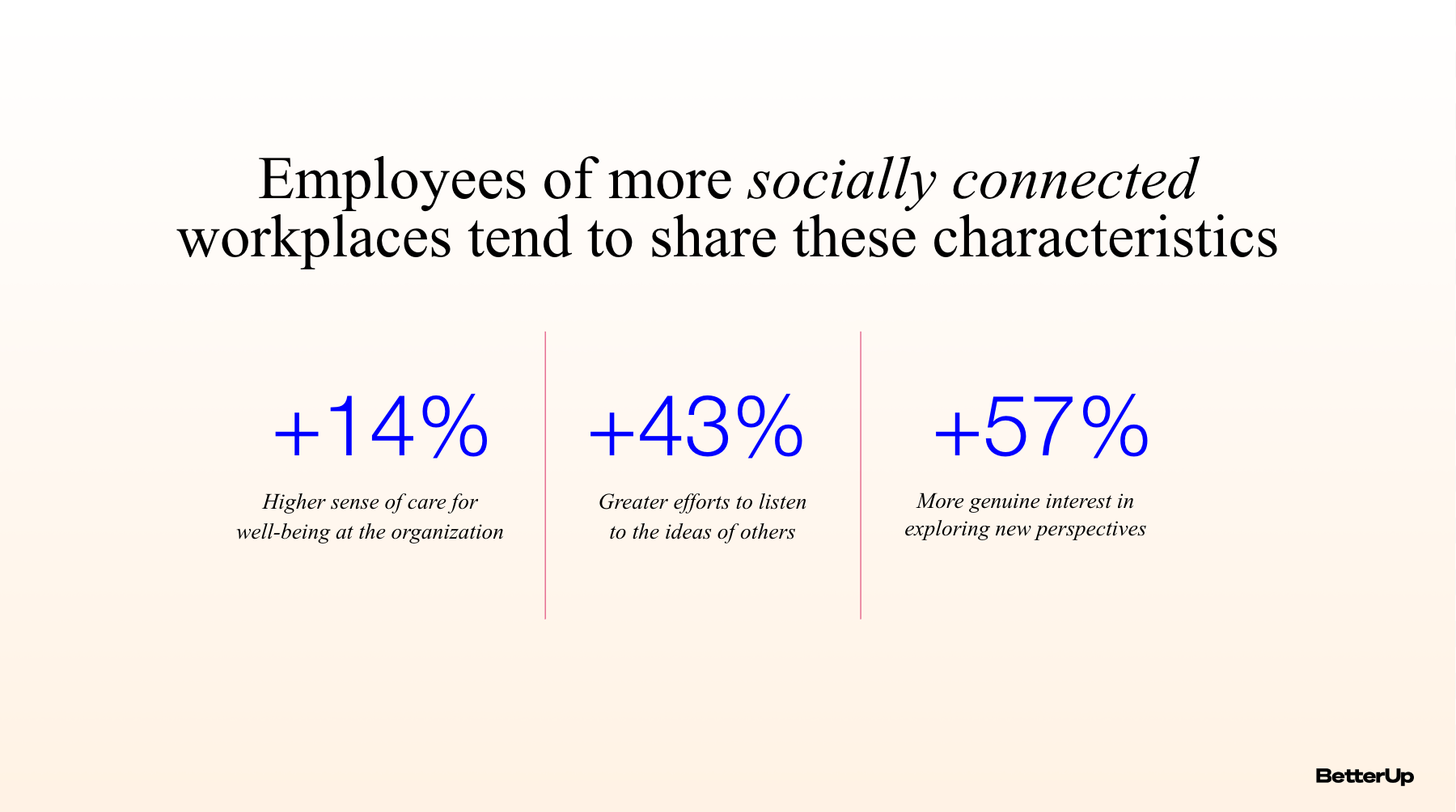
A key part of that human focused strategy is coaching. Coaching supports connected workplaces by giving employees the tools they need to communicate more effectively, break down biases, and build resilience.
“Meaningless stress takes away our happiness. What provides meaning is social connection. Having a coach means that when I look at those hills or walls or obstacles in front of me, I’m not trying to climb them alone — I’m doing that with other people… And once we’re able to see that's possible, it allows us to sustain those positive changes longer.”
Shawn Achor
The benefits of coaching are not only seen through improved employee well-being and performance, they quickly ripple throughout the rest of the organization and in other parts of individuals’ lives.
“We now have over 100 employees who are engaged with BetterUp, and these employees have been thrilled with their experience. What they’re reporting is that not only did their social connection grow, but it also drove their personal sense of support which gave them the focus, energy, and tools to support others around them. The coaching has also driven a desire for more employee development, and created psychological safety… We have been very encouraged by coaching as a key element to achieving greater connection across our workforce.”
Farrell Redwine
Creating a culture of connection takes time but the results are well worth the investment. By making connection a priority, promoting belonging, and establishing a coaching culture, organizations can foster authentic connection that drives both individual well-being and positive business outcomes.
You can get access to the full video of the event along with other helpful resources here
Danny Codella
Danny is a writer, marketer, and keynote speaker with a deep interest in data and human nature. His writing on organizational psychology and cognitive biases is included in the curriculum of several of the world's most prestigious educational institutions including Stanford University and Mount Royal University in Canada. Danny is also a regular contributor to Content Magazine, one of Silicon Valley’s top creative magazines. When he's not sharing insights about data and psychology, Danny enjoys traveling, reading, and expanding his vinyl record collection.


